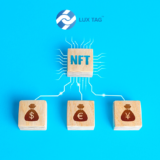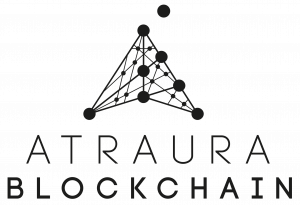What value does NEM Blockchain add above currently available technologies (e.g. Bitcoin, Ethereum)
This is a rewrite of an online Q&A with Jeff McDonald, Vice President of the NEM Foundation (telegram user jabo38) which took place in March 2017 at the discussion web portal Reddit.
Is NEM trying to surpass Bitcoin? Or is it even 10x better than Bitcoin?
In some areas, I could say yes. For instance, NEM is indeed more than ten times efficient in securing the network if you are going upkeep costs. This means basically that Bitcoin miners are dumping probably more than a million dollars of Bitcoin each day to keep Bitcoin alive, but NEM harvesters barely need to sell anything at all. How does that matter? Well, let me put it the opposite way, what would the NEM market cap be like if US$1m of new money came in each day? It would be a lot higher than Bitcoin’s market cap probably.
With the next major release, we also will definitely have a main net that will scale in tx/s more than ten times Bitcoin.
And as far as features go, well, yes we have ten times that too. Imagine CounterParty built into Bitcoin; that is NEM Mosaics, but Mosaics are better. Imagine Namecoin built into Bitcoin. That is Namespaces, but yet, namespaces are A LOT better. Imagine messages being allowed to be built directly into Bitcoin in a proper way that it was designed instead of people hacking into the OP_Return. Imagine an advanced multisig application like Bitpay’s Copay service, except for again, NEM’s is still much better – because with NEM it’s an on-chain core feature, not run as an external agent.
And then we have spam protection, something Bitcoin has long needed, and we have node reputation. And imagine Factom that didn’t need its own coin and didn’t’ need its own network, and instead of just offering plain one-off timestamps, instead offered timestamps that were transferable to others, updatable, able to hold additional memos and even be branded, and now you have NEM’s Apostille. All right there for you when you log into NEM.
Okay, so that is enough to show why NEM is ten times better than Bitcoin when considering features, but what about Ethereum?
Well, for one, Ethereum doesn’t scale and can’t scale and will quickly run into the same problem as Bitcoin once somebody actually starts to use it. But NEM has been designed from scratch to scale. Two, Ethereum is not easy to build on nor safe. With NEM, third-party devs get super easy APIs to build on that are always 100% safe. Ask yourself where is Ethereum’s namespaces or Ethereum’s Apostille? There is a reason you can’t really find it. Both of these are actually possible in Ethereum, but would require something quite complicated to build, but these are easy to do in NEM. So in some cases, NEM is ten times easier to build on than Ethereum for a certain range of advanced applications, but in other cases, this isn’t true. In some cases, Ethereum can do some things NEM can’t. That is because the platforms are very different.
So while a good case can be made that NEM is always 10x better than Bitcoin, it is hard to say the same applies for Ethereum, but overall I think NEM is still better than Ethereum. Think of Ethereum as a platform where you can do anything, but it might be a little hard, and NEM as a platform where you can do a lot of the most important things, but it is easy to do. There is a trade-off to each approach, and neither is perfect.
You said NEM has spam protection. Is it possible for people to make spam transactions to other accounts that they hold and game the system?
Not really. The NEM devs did a really good job of making a proper spam system with many parts to the formula. So first of all, if you make different accounts and spam yourself, the harvesters (NEM miners) like that and they will collect the fees, but the problem is if you fill up all the blocks to try to censor other transactions. So you are allowed to spam as long as you want to pay for it; you just make our harvesters happy. But let’s say all the blocks are full and now you are interfering with other people’s transactions. The accounts making so many transactions will have their fees raised and the regular accounts like mine and yours won’t.
But quickly the hacker learns that sending XEM back and forth between a few accounts makes his fees go ever increasingly higher.
So let’s say the hacker is really serious and he makes 5,000 accounts and is using each one just a little bit, but overall, it makes up network spam, and it is hard to raise the fees as it isn’t just one or a few accounts that can be penalized for spamming. Then it switches over to POI (Proof-of-Importance, NEM’s consensus algorithm – in contrast to POW and POS of other Blockchains).
See a regular account like yours or mine will probably have $100s or $1000s or maybe even $10,000s worth of vested XEM and good POI. If the network is having all these transactions come from different one-off accounts than the accounts with the highest POI get through. This is logical as the bigger POI accounts have the most invested in the system and are less likely to be spammers.
So to successfully pull off a spam attack that disrupts both your and my transactions and tries to censor us, the attacker has to 1) buy a ton of XEM and spread it out over A LOT of accounts, then 2) age it in over a long time over lots of accounts so that the accounts have POI higher than my account and your account. Then he can start to spam the network and by doing so keep my transactions and yours from being included in a block. Or so it seems because NEM takes censorship resistance to the next level now because then we can just raise our fee and he would then have to raise his fee to match our raises over all those accounts too.
So basically, if somebody wants to put 100,000 XEM over 1,000 accounts, that means he needs to buy 100,000,000 XEM (almost $2,000,000 worth of XEM), then he needs to age it in, then he needs to send additional higher transaction fees, so yeah, good luck with that. We are talking about spending more than a million dollars and waiting weeks patiently and then spending more in fees, to attack a network, which would then make the market cap drop, which then he would have to sell at a big loss when exiting.
Putting it simply, we won’t ever see a serious spam attack. Now, compare that with Bitcoin where somebody last year was able to spend $5,000-$20,000 a day and totally fill up all the blocks and stop regular transactions. So we are also ten times better when it comes to spam too. But this kind of thought wasn’t just applied to spam, it was applied to everything the NEM developers (“devs”) did. We could talk about how their next version, Catapult, will be the ONLY great blockchain and really the first great blockchain that enterprise companies can actually use.
Also, the question of how we deal with spam isn’t exactly the right question. This assumes our network sucks and has to be protected against spam. In reality, we want lots of transactions. Bring it on. That just means more money for harvesters. We just want real transactions, not malicious ones, so just in case there was an attack where somebody was trying to stop another person’s transactions, it would be really hard, cost a lot (several million $US), and would take a lot of advanced planning.
So you want more and more people to use NEM. Won’t that affect decentralization like it does in Bitcoin? Is NEM more decentralized than Bitcoin?
In NEM, we want transactions. In Bitcoin, they actually don’t want too many, because that means bigger blocks, which means less full nodes. Remember that in Bitcoin, full nodes don’t get paid. People are just running them to run them. It is an altruistic system, which basically means it won’t work at scale, to put it bluntly.
NEM supporters running full nodes are getting paid! They are our harvesters. Mining and running a full node are combined in NEM, not separated like in POW (Bitcoin’s blockchain consensus algorithm). In POW, miners don’t actually care about anything but the reward, and full node runners don’t actually get paid. In NEM full node operators do get paid and actually do care about that network too because they are directly invested in it. And the more transactions, the better for them, that is just more money they get. Okay, yes, NEM would have bigger blocksizes and everyone’s hard drive fill up faster, but with all that money, they can buy a dozen more hard drives. For real. We can’t wait to have full blocks in NEM.
Furthermore, in Bitcoin bigger blocks brings centralization because fewer people run fewer nodes, and also there are hardware advancements in POW, mean mining is ever more centralized too. But in NEM bigger blocks means more DECENTRALIZATION. This is because even a light computer like a Raspberry Pi 3 can harvest in NEM. Right now somebody with a balance of 15,000 XEM and a thus relatively low POI (Proof of Importance) %-score might not be harvesting because the fees aren’t high enough from making blocks, but if blocks were full, and he can turn the Pi on and get a couple of blocks a month and if each block was getting him $5 or more, then yes, a lot of people would be running these full nodes at home.
Even small investments could lead to some harvesting rewards, and it isn’t hard, even a beginner could follow the tutorial and start harvesting, and in the future, we will make it even easier. There are a lot of people that haven’t ever mined a block or been a part of a network but in NEM are actually making blocks for the first time. Once more people see that they can actually be a meaningful part of the network and even get a little profit, more harvesting nodes go up and we are even more decentralized. When we look at NEM over the course of two years since its launch, we see it becoming more and more decentralized.
Given we have one-click mobile payments available in all major countries, do you see people adopting cryptocurrencies for daily payments?
That is a bit hard to predict, and many factors are in play that will affect it, but yes, I think it is possible, especially in some markets that aren’t efficient or underserved.
Credits to Jeff McDonald (NEM Foundation) and the user “harshpokharna” who asked the right questions to trigger these explanations.
Source: https://www.reddit.com/r/nem/comments/61yjfw/what_value_does_nem_provide_given_we_have_a_suite/
About NEM
NEM is an innovative blockchain technology project, a peer-to-peer crypto platform. It Is written in Java and JavaScript with 100% original source code. NEM has a stated goal of a wide distribution model and has introduced new features in blockchain technology in its proof-of-importance (POI) algorithm. It also features an integrated P2P secure and encrypted messaging system, multisignature accounts and the Eigentrust++ node reputation system.
NEM has gone through extensive open alpha testing starting June 25, 2014, followed by lengthy and comprehensive beta testing starting on October 20, 2014. NEM’s public blockchain launched on March 31, 2015, and is now running without interruptions for almost two years. The private chain project “mijin” is powered by NEM technology.
Today, NEM is undergoing development of an upgraded core technology called “Catapult”. Catapult will power mijin in the first phase and become implemented into the NEM public chain subsequently during 2017.









